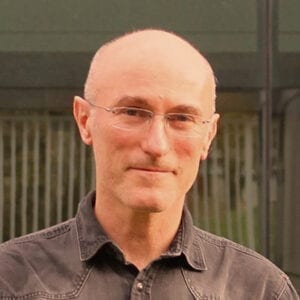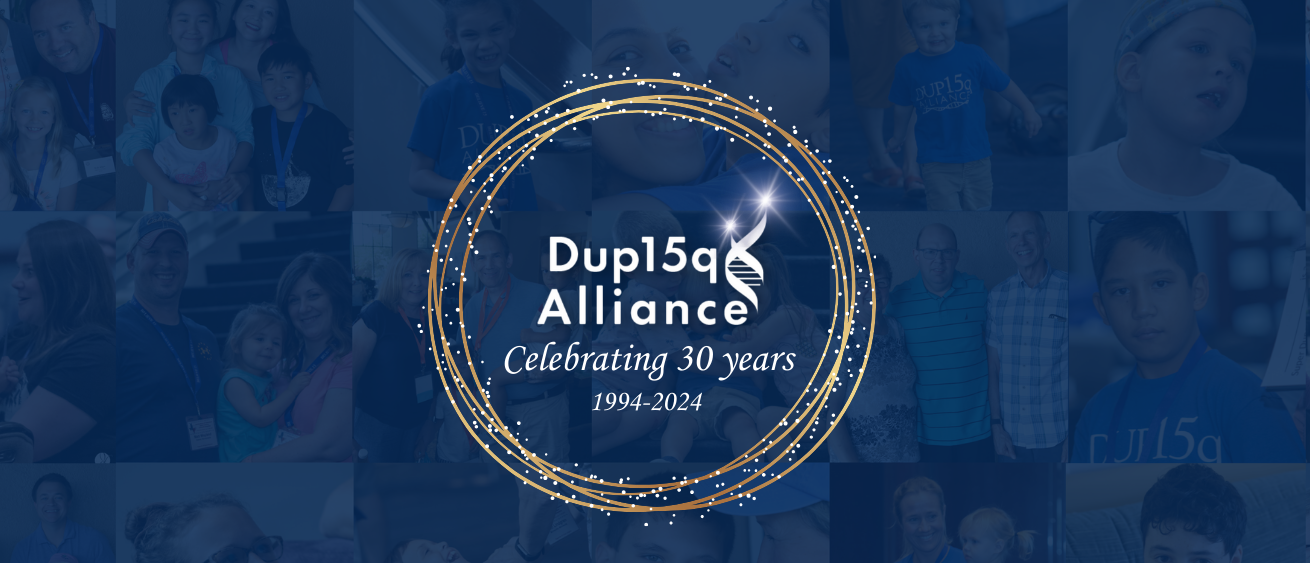Dup15q Alliance Research Grant Program
Researchers funded by the Dup15q Alliance have a strong history of obtaining additional funding, principal investigators who received funding (>$400,000) from the Dup15q Alliance subsequently garnered an additional $2.5 million from the NIH for dup15q syndrome-related research.
The Dup15q Alliance Research Grant Program emphasizes the need to support research by established independent investigators (post training period). This funding opportunity is open to investigators at established academic or research institutions. Researchers residing in the United States do not need to be U.S. citizens to apply for funding.
Questions
Questions may be sent to us at research@dup15q.org.
Dup15q Alliance Indirect Costs Policy
For research grants, including postdoctoral fellowships, the Dup15q Alliance does not provide indirect costs.
(Policy Adopted 7/17/2014 in organizational bylaws and guidelines)
For questions relating to this policy please contact research@dup15q.org.
Dup15q Alliance Grant Recipients
Dr. Ben Philpot
 Dr. Ben Philpot earned his Ph.D. in psychobiology from the University of Virginia in 1997. He performed a neuroscience postdoctoral fellowship in the laboratory of Dr. Mark Bear at Brown University and M.I.T., before coming to UNC in 2004. He is currently a Kenan Distinguished Professor in the Department of Cell Biology and Physiology, Associate Director of the UNC Neuroscience Center, and a member of the Neuroscience Curriculum and the Carolina Institute for Developmental Disabilities (CIDD). Dr. Philpot is the co-Director of a cross-disciplinary postdoctoral training grant for the CIDD.
Dr. Ben Philpot earned his Ph.D. in psychobiology from the University of Virginia in 1997. He performed a neuroscience postdoctoral fellowship in the laboratory of Dr. Mark Bear at Brown University and M.I.T., before coming to UNC in 2004. He is currently a Kenan Distinguished Professor in the Department of Cell Biology and Physiology, Associate Director of the UNC Neuroscience Center, and a member of the Neuroscience Curriculum and the Carolina Institute for Developmental Disabilities (CIDD). Dr. Philpot is the co-Director of a cross-disciplinary postdoctoral training grant for the CIDD.
Project Title: Exploration of critical periods for UBE3A overexpression in Dup15q syndrome and ASD
Project Dates: 2019 – 2021
Grant: $50,000 annually ($100,000 total)
Abstract: Dup15q syndrome accounts for 1-3% of all autism spectrum disorders and carries significant risk for seizures, which can be lethal. Individuals with Dup15q inherit extra copies – usually 1 or 2 – of genes within the 1511.2- q13 chromosome region. It is unclear which of these contributes to the disorder, or how they increase risk for seizures, but UBE3A has emerged as a primary candidate gene. We will generate new mouse models for the study of how extra UBE3A copies confer risk for seizures. Our mice will carry 1 or 2 extra Ube3a copies, mirroring the UBE3A overdosage observed in Dup15q. Using these models, we will study key aspects of seizure expression: 1) initial responses to seizure-causing drugs (seizure threshold), (2) responses to repeated, recurrent seizures (epilepsy), and (3) lethality during seizures, which could help us to model sudden unexpected death in epilepsy (SUDEP), a serious risk for individuals with Dup15q. We will also perform electroencephalograpy (EEG) on our mice to determine if UBE3A overdosage produces changes in brain rhythms that are seen in the Dup15q population. Our project will yield insights into the relationship between a key Dup15q gene and the debilitating seizures plaguing individuals with the disorder, and in the process, provide outstanding training opportunities in seizure behavior and in vivo electrophysiology. Importantly, our models will be applicable to the study of any relevant Dup15q phenotypes, and they will feature reversible Ube3a overexpression, so that the therapeutic benefits of returning Ube3a to normal levels can be explored.
Dr. Gilles Travé
 Gilles Travé obtained a PhD in molecular biology and biochemistry from the University of Toulouse (France). After a post-doctoral work in structural biology at the EMBL-Heidelberg (Germany) he was appointed as a research scientist by the Centre National de la Recherche Scientifique (CNRS) to work at the Ecole Supérieure de Biotechnologie de Strasbourg (Université de Strasbourg, France). He currently leads a research team dedicated to structure-function studies on the E6 oncoproteins of human papillomaviruses (HPVs). After having struggled many years to solubilize E6 proteins, the team has solved the first structures of E6 proteins, free or in complex with several cellular targets, obtained several informations of E6 protein function, and is currently developing tools to analyze the structural basis of the large cellular interactome of these small viral proteins. Gilles Travé has published several articles dedicated to the analyzis and optimization of recombinant protein quality and he regularly teaches practical courses on this topic, in particular at the University of Bergen (Norway) where he is regularly invited as a visiting professor.
Gilles Travé obtained a PhD in molecular biology and biochemistry from the University of Toulouse (France). After a post-doctoral work in structural biology at the EMBL-Heidelberg (Germany) he was appointed as a research scientist by the Centre National de la Recherche Scientifique (CNRS) to work at the Ecole Supérieure de Biotechnologie de Strasbourg (Université de Strasbourg, France). He currently leads a research team dedicated to structure-function studies on the E6 oncoproteins of human papillomaviruses (HPVs). After having struggled many years to solubilize E6 proteins, the team has solved the first structures of E6 proteins, free or in complex with several cellular targets, obtained several informations of E6 protein function, and is currently developing tools to analyze the structural basis of the large cellular interactome of these small viral proteins. Gilles Travé has published several articles dedicated to the analyzis and optimization of recombinant protein quality and he regularly teaches practical courses on this topic, in particular at the University of Bergen (Norway) where he is regularly invited as a visiting professor.
Grant: $100,000 annually ($200,000 total) * This research project is jointly funded by Dup15q Alliance and Angelman Syndrome Foundation.
Summary: UBE3A is a protein that tags other proteins to be disposed of in the cell. It interacts with another protein, HERC2, which also has a similar function. Individuals with both copies of HERC2 deleted have a neurodevelopmental disorder with features similar to Angelman syndrome.
Dr. Trave will study the interaction between UBE3A and HERC2 to regulate important genes for neurodevelopment and better understand how UBE3A and HERC2 work together.
This study aims to:
- Create the first 3D structure of full-length UBE3A with and without HERC2
- Determine the other proteins that interact with the UBE3A/HERC2 complex
This should help future studies better understand how UBE3A works with HERC2 to impact brain development.
Dr. Charlotte DiStefano
 Dr. Charlotte DiStefano is a clinical psychologist with expertise in minimally verbal children with ASD and related neurodevelopmental disorders. She is a Clinical Instructor in Psychiatry and Biobehavioral Sciences.
Dr. Charlotte DiStefano is a clinical psychologist with expertise in minimally verbal children with ASD and related neurodevelopmental disorders. She is a Clinical Instructor in Psychiatry and Biobehavioral Sciences.
After receiving a B.S. in Special Education from New York University and an Ed.M. in Mind Brain and Education from Harvard University, Dr. Charlotte Distefano received her Ph.D. in Psychological Studies in Education from UCLA. She completed her postdoctoral training at the UCLA Center for Autism Research and under the mentorships of Drs. Connie Kasari and Shafali Jeste. Before earning her Ph.D., Dr. DiStefano worked as a special education teacher with children with ASD, in both New York City and Los Angeles.
Clinically, Dr. DiStefano sees patients in the Child and Adult Neurodevelopmental Clinic, and the Developmental Neurogenetics Clinic. She provides assessment and evaluation of children with ASD and related neurodevelopmental disorders, as well as treatment consultations regarding language and communication development.
Grant: $25,000
Summary: This study will employ a telehealth model to conduct remote assessment of developmental and clinical characteristics of children with dup15q syndrome, and evaluate the feasibility, sensitivity and test-retest reliability of the measures. We will use the Parent-Administered NeuroDevelopmental Assessment Box (PANDABox), atelehealth-based assessment battery for children with rare syndromes, along with the Brief Observation of Social Communication Change (BOSCC). PANDABox integrates experimental methods (e.g. automated monitoring of heart rate, vocalizations) with parent-led between ages 2-10 (interstitial and isodicentric), who are ambulatory and use no or minimal spoken language. Participants will complete two initial remote assessment batteries, within one week of each other. These assessments will be used to examine test-retest reliability. Participants will then complete a third remote assessment battery, approximately 6 months later. This time point will be used to examine change over time in the experimental variables. Data from all three time points will be used to examine feasibility and tolerability of the experimental measures. Based on the funding provided, we will be able to create two PANDABox kits. We anticipate that the initial two time points will require the kits to be in use for three weeks (two allow the family to complete two assessment sessions), while the final time point will require the kits to be in use for two weeks. This timeline will allow us to collect and analyze data from 10 families within the funding period, which is sufficient to complete
the proposed pilot testing.

